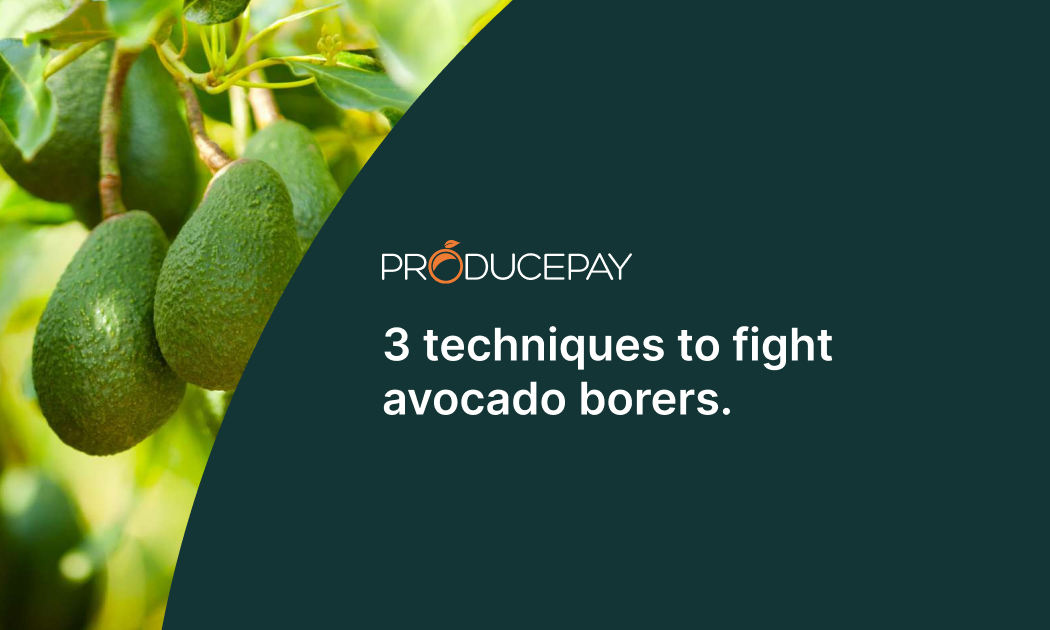
3 techniques to fight avocado borers.
Borers are a common pest that can cause significant damage to avocado trees if left uncontrolled.
Through the National Service of Agrifood Health, Safety and Quality (SENASICA), the Mexican federal government constantly monitors avocado growing and exporting regions to ensure that borers are not damaging avocado crops intended for the US market.
In 2023, SENASICA reaffirmed that 12 municipalities in the state of Jalisco are free of these pests. The state currently has 15 municipalities (including 25 packinghouses) designated as borer-free zones, a recognition that must be renewed every two years.
How borers affect avocado crops
Several types of borers can affect avocado crops. The most relevant from an economic perspective are:
- Avocado branch borer (Copturus aguacatae): Damages young branches by drilling holes and weakening the tree structure.
- Avocado stem borer (Heilipus lauri): Damages the tree trunk, creating galleries that rapidly weaken its structure.
- Avocado pit borer (Stenoma catenifer): Feeds on the fruit by drilling holes in the pit that damage its quality.
- Avocado seed borer (Conotrachelus perseae): Feeds on avocado seeds, creating galleries and damaging the fruit.
Borers are quarantine pests in the United States and are subject to strict phytosanitary protocols to prevent their entry. That’s why countries that supply avocados to the US market must ensure that their exporting regions are free of these pests.
How to deal with avocado borers
Borers are the biggest phytosanitary problem for avocado growers. Not only can they cause significant damage to the fruit, but their presence also affects its marketability in the United States.
Here are three practical techniques to prevent and control borers in avocado trees:
1. Biological control: use of predatory insects
Biological control is a technique in which living organisms eradicate a pest. Borers can be eliminated naturally using predatory insects such as parasitic wasps and predatory bugs capable of parasitizing or preying on their larvae.
The great advantage of biological control is that it causes no harm to the environment. However, establishing proper biological control requires an expert in the field.
2. Pheromone traps
Pheromone traps are a pest control technique that uses the sexual attraction of insects to trap them. The traps release pheromones that attract male borers, which prevents them from mating with females, thus reducing the borer population in the crop.
Pheromone traps are also an environmentally friendly way to control borers, although it is necessary to know their reproductive cycle for this method to work correctly.
3. Chemical control
Chemicals are widely used to eliminate borers and reduce their population in the crop. However, excessive use can be detrimental.
It’s important to work with experts when applying pesticides to protect people and the environment. They must also be continuously monitored to determine effectiveness.
Why are borers such important pests in avocados?
For 83 years, the United States banned the import of Mexican avocados due to strict tariffs and phytosanitary regulations imposed by the government. Preventing the introduction of invasive pests that could damage crops was a significant priority, and borers were at the top of the list of banned bugs.
The ban was partially lifted in 1997 after Mexico complied with quality standards and because of the avocado industry’s commitment to improving phytosanitary standards, which guaranteed the total absence of borers in shipments sent to the United States.
U.S. government personnel are constantly inspecting Mexican shipments for these pests, and their presence would significantly harm Mexican producers’ and exporters’ ability to sell to the US.
Sources: Jalisco, El Financiero, USDA-APHIS

